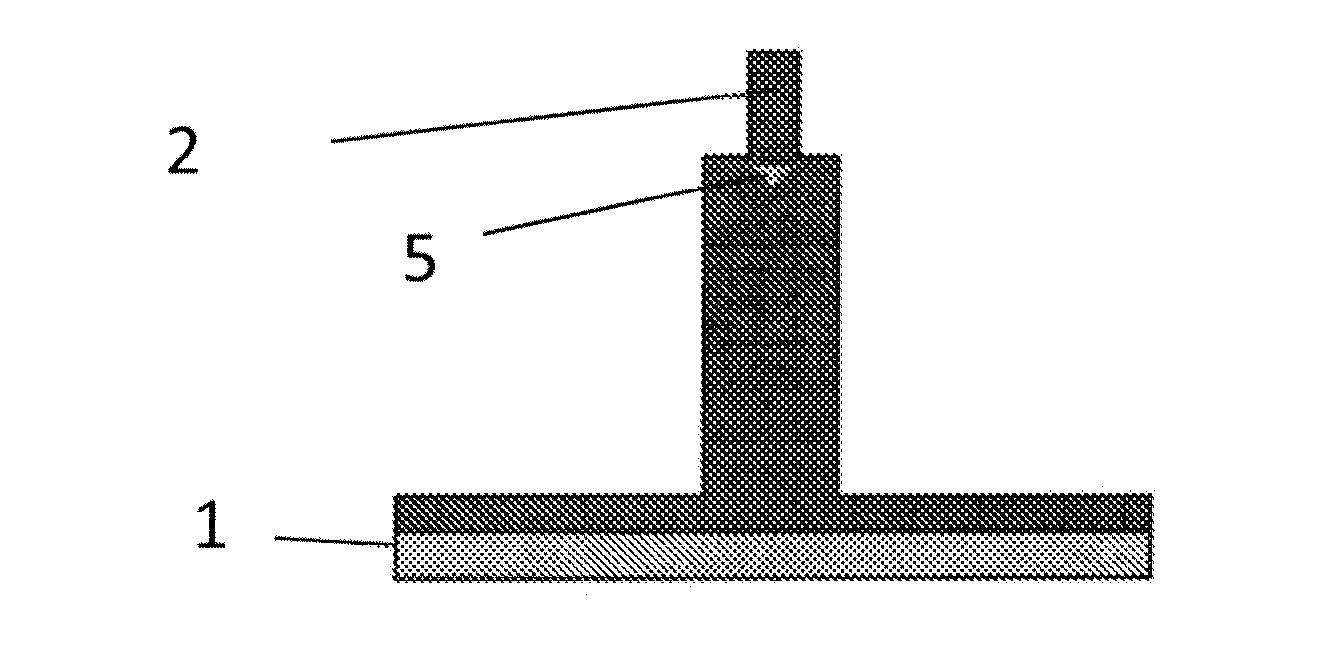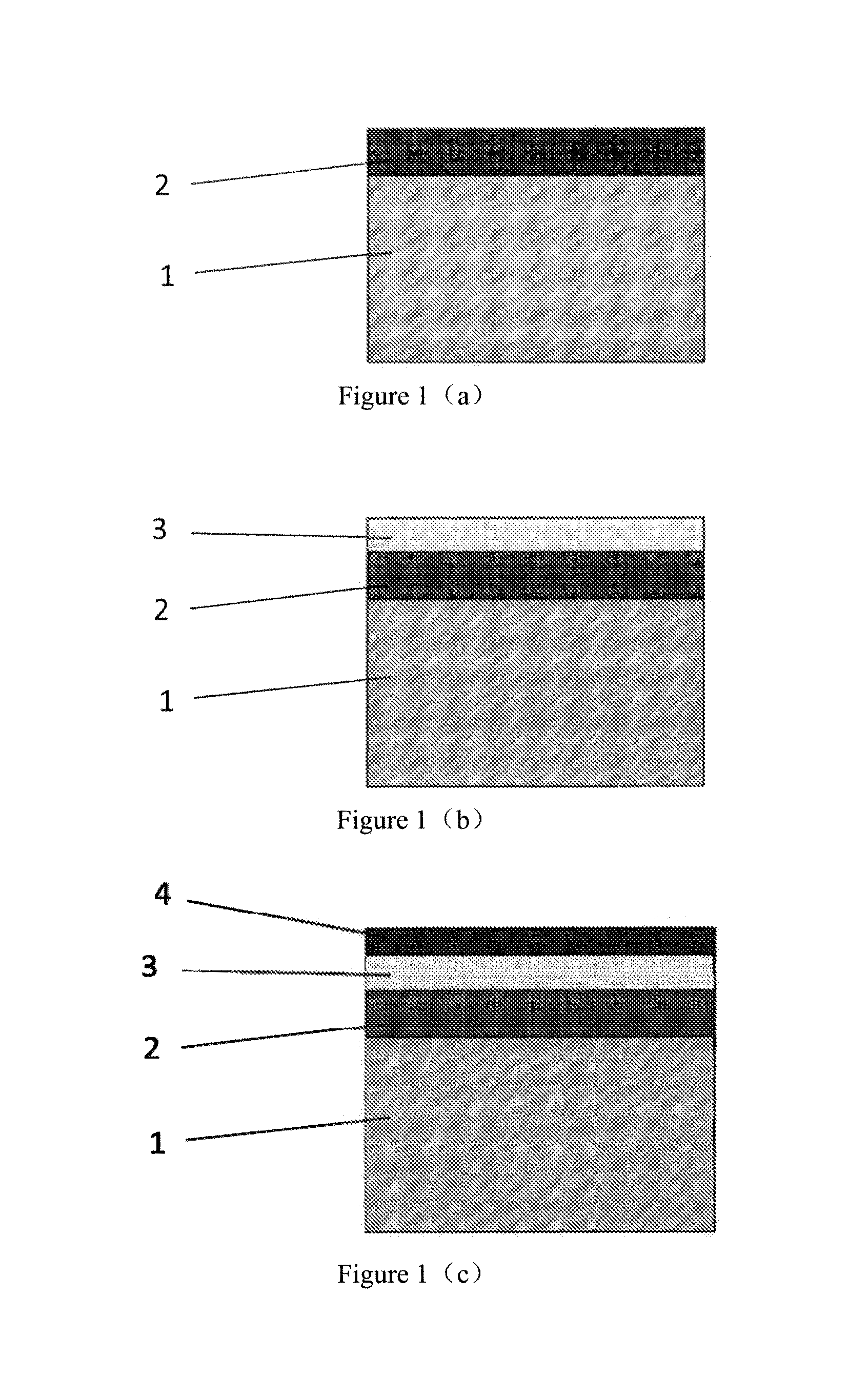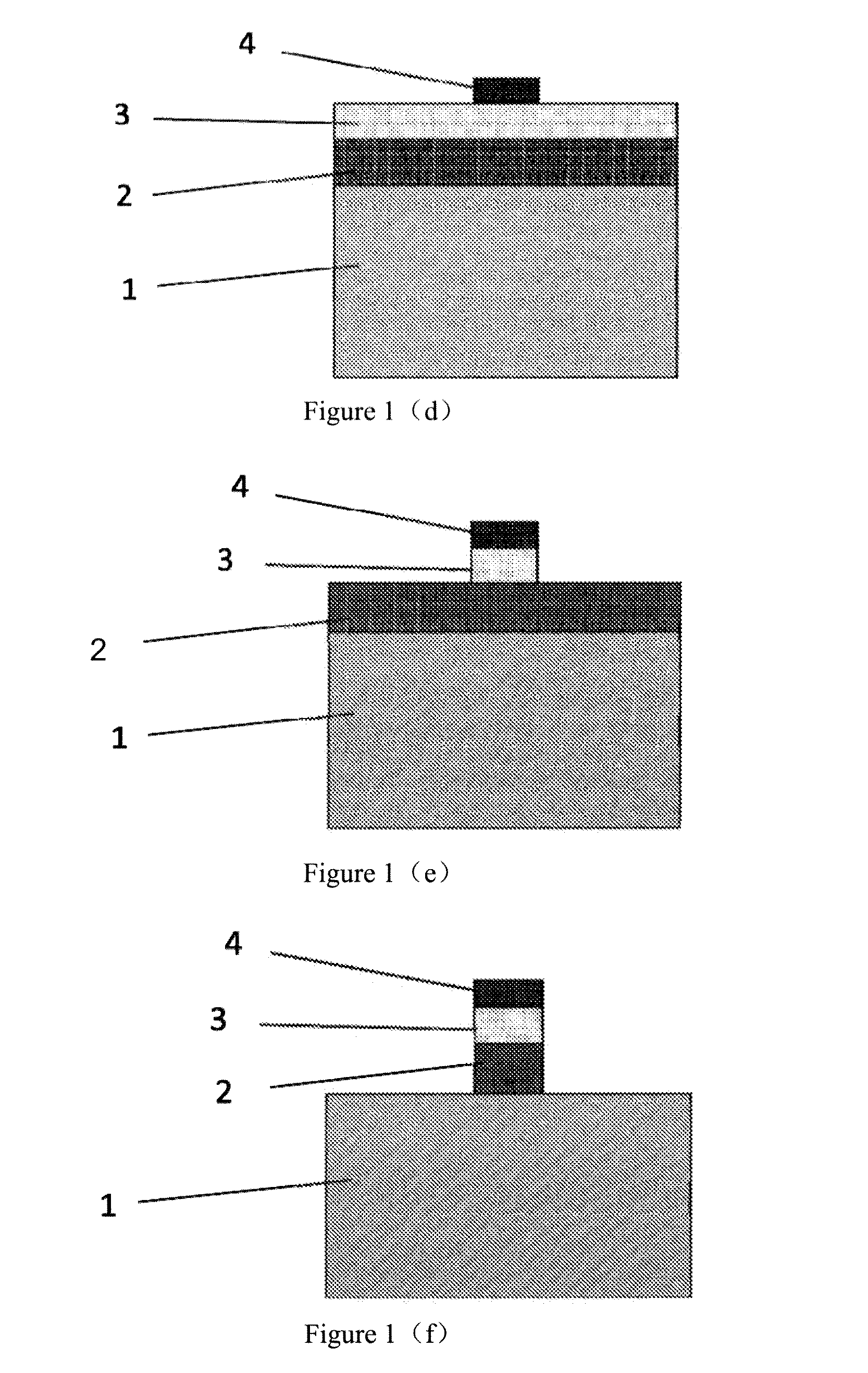Method for fabricating ultra-fine nanowire
a nanowire and ultra-fine technology, applied in the field of manufacturing transistors, can solve the problems of limiting the application of electron beam lithography in mass manufacturing, high cost, and low efficiency, and achieve the effects of reducing the width of nanowires, and reducing the cost of manufacturing
- Summary
- Abstract
- Description
- Claims
- Application Information
AI Technical Summary
Benefits of technology
Problems solved by technology
Method used
Image
Examples
Embodiment Construction
[0027]A detailed description of the invention will be described with reference to the accompany drawings and an embodiment.
[0028]An ultra-fine nanowire with a diameter of about 20 nm may be fabricated by the following steps.
[0029]1. A silicon oxide film with a thickness of 1500 Å is deposited on a silicon substrate through a low pressure chemical vapor deposition process, as shown in FIG. 1(a).
[0030]2. A silicon nitride film with a thickness of 500 Å is deposited through a low pressure chemical vapor deposition process, as shown in FIG. 1(b).
[0031]3. A photoresist is coated on the silicon nitride film, as shown in FIG. 1(c).
[0032]4. A region where a hard mask for the silicon nanowire is to be formed is defined through a photolithography process, as shown in FIG. 1(d).
[0033]5. The silicon nitride film is etched by 500 Å through an anisotropic dry etching process, so as to transfer a pattern of the photoresist onto the silicon nitride film, as shown in FIG. 1(e).
[0034]6. The silicon o...
PUM
| Property | Measurement | Unit |
|---|---|---|
| thickness | aaaaa | aaaaa |
| diameter | aaaaa | aaaaa |
| volume ratio | aaaaa | aaaaa |
Abstract
Description
Claims
Application Information
 Login to View More
Login to View More - R&D
- Intellectual Property
- Life Sciences
- Materials
- Tech Scout
- Unparalleled Data Quality
- Higher Quality Content
- 60% Fewer Hallucinations
Browse by: Latest US Patents, China's latest patents, Technical Efficacy Thesaurus, Application Domain, Technology Topic, Popular Technical Reports.
© 2025 PatSnap. All rights reserved.Legal|Privacy policy|Modern Slavery Act Transparency Statement|Sitemap|About US| Contact US: help@patsnap.com



